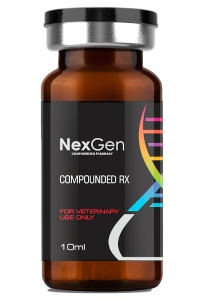Shortening of the Estrous Period in Mares

The fact that the horse is seasonally polyestrous makes this species a reproductive challenge for horsemen and equine practitioners. Mares will show several estrous cycles during the breeding season, assuming pregnancy does not terminate estrus. The receptive season is limited to such a length of time that parturition occurs in the Spring of the year.1
For purposes of scheduling breeding and for the behavioral control of intact mares, it is often desirable for horse owners and managers to employ methods of reproductive management, or manipulation of the estrous cycle. Shortening of the estrous period in mares is one such manner of regulation.
Manipulation of the Photoperiod
Horse owners and managers have long relied upon manipulation of the photoperiod for the reproductive management of mares. In order to bring the mare into estrus, many horse owners and managers start with manipulation of the light cycle. "We start with the basic premise that the key to reproduction is light... [H]orsemen literally can trick Nature into moving out of its natural rhythm with the administration of artificial light."2
The physiologic breeding season can be successfully manipulated to fit into the operational breeding season by artificially increasing the photoperiod. The minimal length of light exposure necessary has not been critically established, but field experience indicates that 14 to 16 hours of light stimulus (artificial plus natural) per day is adequate. A recent study provided evidence that high light intensities may not require as many days of lighting to induce cyclicity in anestrous mares and that low light intensities may not be as efficacious in stimulating desired responses. Nevertheless, because lighting programs have traditionally been thought to require a minimum of 8 to 10 weeks for response, mares in the northern hemisphere are exposed to the lighting system by December 1 to establish normal cyclic activity by mid-February.3
Chemical Ovulation Control
In shortening the estrous cycle, appropriate manipulation of the photoperiod is used according to the related breeding program, however chemical regulation is essential to achieve desired outcomes.
The current therapeutic approaches to reproductive endocrine suppression include gonadectomy and progestagen administration, where the former carries surgical risks and entails irreversible loss of breeding potential, and effective progestagen therapy requires frequent administration for extended periods and is banned in some competing animals as potentially anabolic. In this context, preventing the action of gonadotrophin releasing hormone (GnRH) by blocking its pituitary receptors is an attractive alternative for reversibly rendering mares anestrus or depressing testosterone secretion or spermatogenesis in stallions.4
According to one study, "A single intramuscular or intravenous injection (2,500 IU) of human chorionic gonadotrophin (hCG) at the appropriate time during estrus has resulted in ovulation within 24 to 48 hours and a shortening of the estrous period compared with untreated controls. Disadvantages of hCG include some refractory responses from antibodies formed against this foreign protein."3
The purpose of the study summarized above was to determine the efficacy (ovulation response) of a highly potent GnRH analog, deslorelin, delivered in a novel slow-release implant, in accelerating and ensuring ovulation within 24 to 48 hours of administration in cyclic estrous mares.
Buserelin and deslorelin have been widely used in the chemical regulation of mares, but several studies, as well as many veterinarians and compounding pharmacies have achieved superior results using several such compounds in combination.
Horse owners/managers who are not extensively experienced in the regulation of mares' reproductive cycle are advised to consult with their veterinarian prior to any attempts at such regulation, or at shortening the estrous period in their mares.
 Equine Breeding Products
Equine Breeding Products
You can find equine breeding products in our online store. Login to your account to view prices and purchase or create an account. Please note you must have a valid veterinarian license to create an account. If you do not, please forward our information to your veterinarian.
1Smith, J. A., Redding, W. R. (1989) Methods of Shortening the Anestrous Period in Mares, Iowa State University Veterinarian: Vol.51 : Iss. 2 , Article 14.
2Sellnow, L. Regulating Estrus in Mares. The Horse, Dec. 1998.
3Manipulation of Estrus in the Mare.veteriankey.com.
4Stout, T.A.E., Colenbrander, B. Suppressing reproductive activity in horses using GnRH vaccines, antagonists or agonists, Animal Reproduction Science, Volumes 82–83, July 2004, p. 633-643.
About NexGen Pharmaceuticals
NexGen Pharmaceuticals is an industry-leading veterinary compounding pharmacy, offering sterile and non-sterile compounding services nationwide. Unlike other veterinary compounding pharmacies, NexGen focuses on drugs that are difficult to find or are no longer available due to manufacturer discontinuance or have yet to be offered commercially for veterinary applications, but which still serve a critical need for our customers. We also specialize in wildlife pharmaceuticals, including sedatives and their antagonists, offering many unique options to serve a wide array of zoo animal and wildlife immobilization and anesthesia requirements.
Our pharmacists are also encouraged to develop strong working relationships with our veterinarians in order to better care for veterinary patients. Such relationships foster an ever-increasing knowledge base upon which pharmacists and veterinarians can draw, making both significantly more effective in their professional roles.



